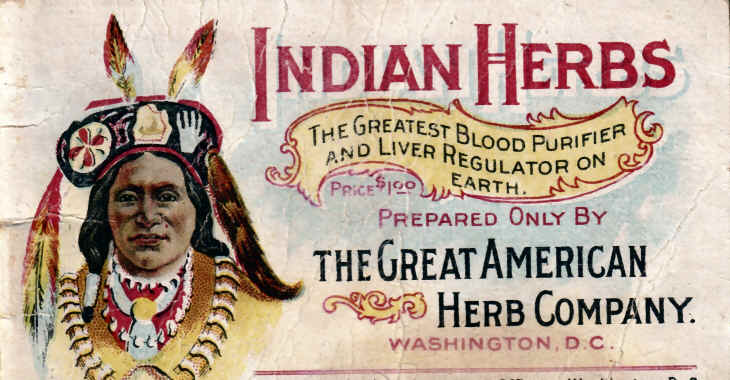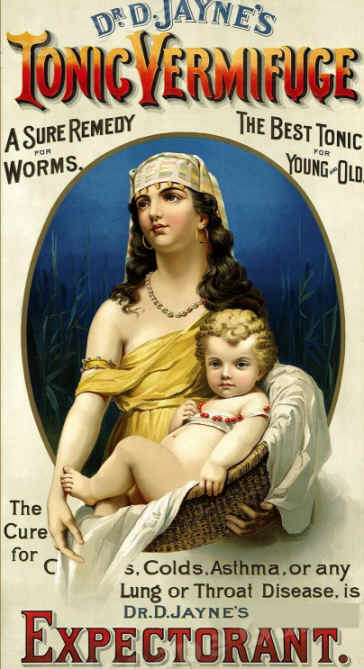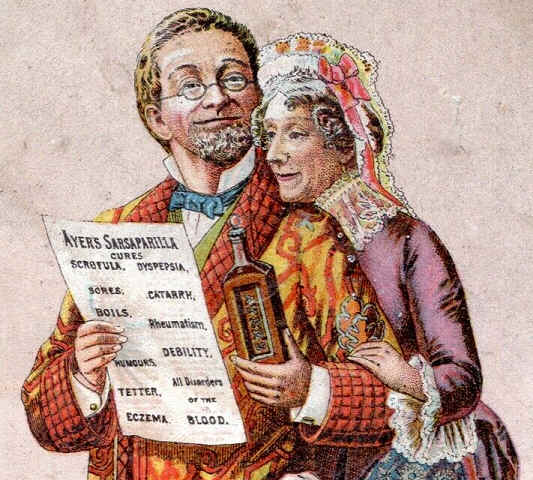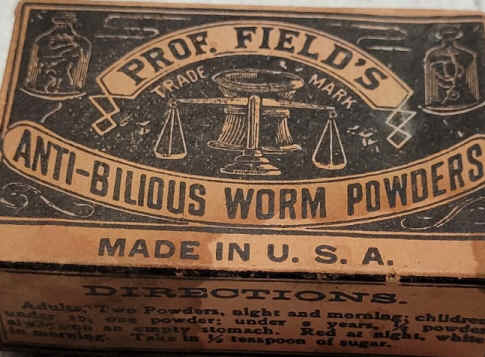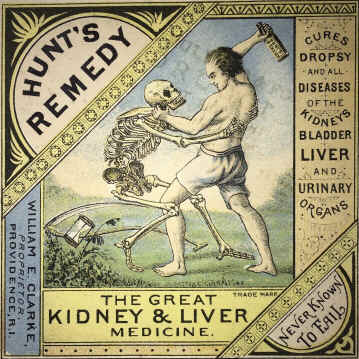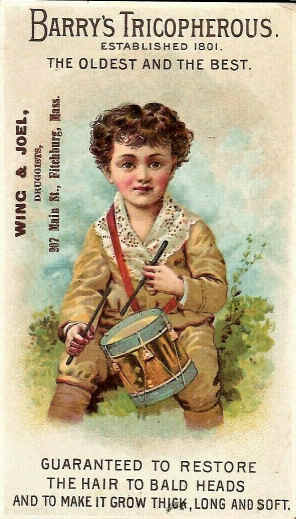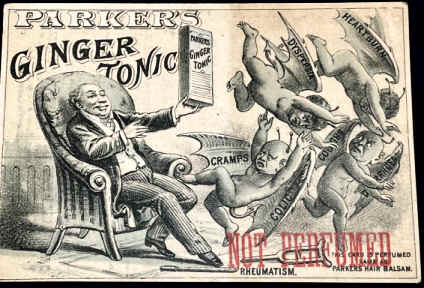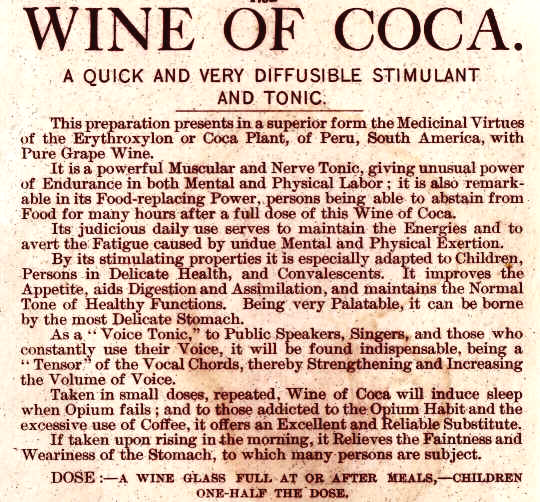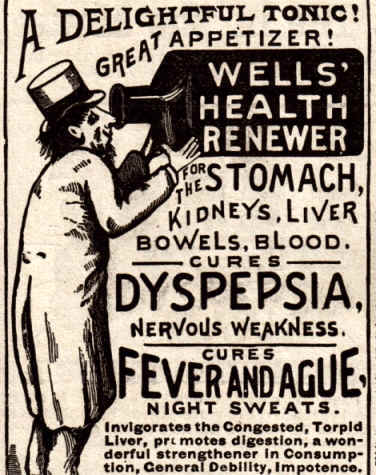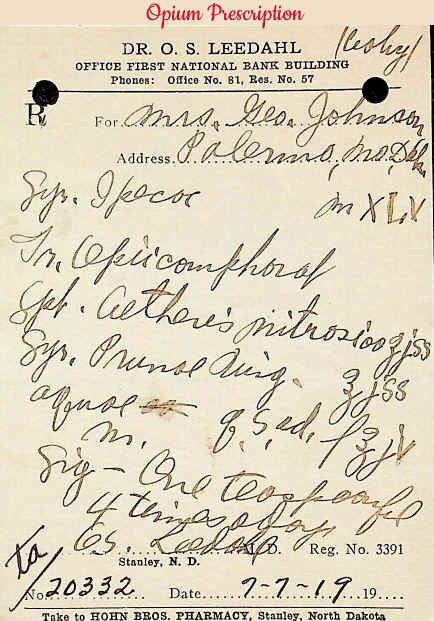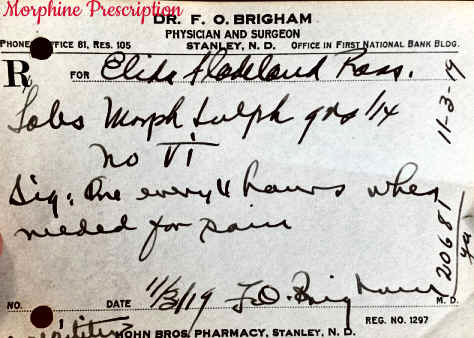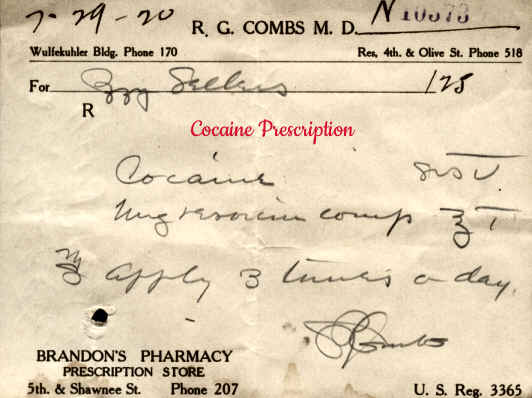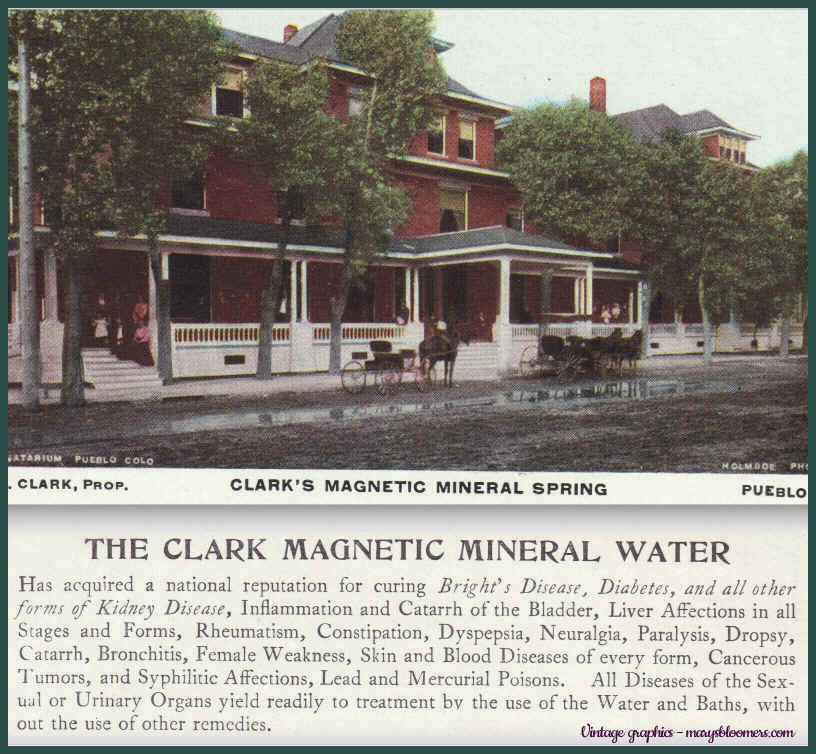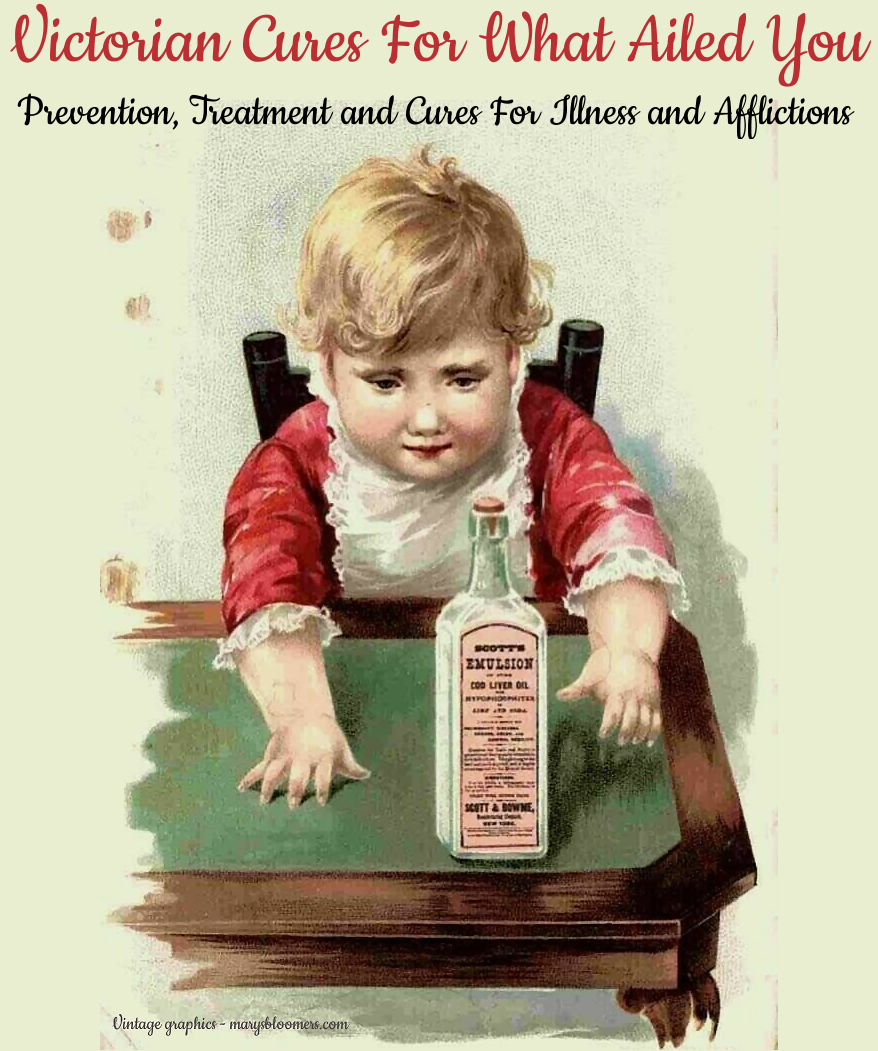 |
| Victorians relied on
natural remedies, often handed down through the generations. From the
use of leeches, opium and morphine, to the mellow herbs, plants and
honey. These remedies often worked quite well – but there were some
that would be considered dangerous by today’s medical standards.
In Victorian England, among the general causes of illness 'diseased parents', night air, sedentary habits, anger, wet feet and abrupt changes of temperature. The causes of fever included injury, bad air, violent emotion, irregular bowels and extremes of heat and cold. Cholera was said to be caused by rancid or putrid food, by 'cold fruits' such as cucumbers and melons, and by passionate fear or rage. Treatments relied heavily on a 'change of air', together with emetic and laxative purging and bleeding by cup or leech (a traditional remedy in use until mid-century) to clear impurities from the body. The Victorian PharmacistThe Victorian pharmacy brought medicine and healthcare to the general population. Here, the different ingredients for each ailment were measured out and mixed by a pharmacist. Herbalists worked with doctors, informing them about which herbs and plants would work best on certain ailments. It wasn’t until later in the Victorian era that the position of a pharmacist became a specialized job.
Ayer’s Cherry Pectoral was meant to
cure anything from a simple cold or cough, and lung diseases,
including tuberculosis.
The nature-based remedies that actually worked for many, and that did no harm, include: Cod Liver Oil Bee balm While bee balm is edible it is also medicinal and was used by Victorians as an antiseptic, a diuretic and as a treatment for colds, headaches and to reduce insomnia. Steam inhalation of the plant can be used for sore throats. Also known as wild bergamot, the plant is a fragrant addition to any herb garden and its flowers can be used in salads. Catmint Related to catnip, catmint can grow up to three to four feet in height and was used by Victorians as a tea to help them sleep and it was also used to ease colic in babies. Catmint should be sown or planted out in spring and thinned to at least a foot apart. It also thrives in containers. Chamomile Chamomile, with its soothing properties and cheerful white daisy-like flowers with their yellow centers is much-loved when used in tea. It has anti-inflammatory and antibacterial properties, can be used in baths and in herb pillows to help relax and ease stress. Lavender Lavender cleanses the skin and was used by Victorians as a treatment for spot-prone skin and to combat headaches and depression. It was also used as a nerve tonic, a compress for chest congestions and was an ingredient in the smelling salts used to revive swooning ladies. In the kitchen, cooks used it to make fragrant fruit jellies and vinegars and housekeepers would use lavender water to scent bed linen to aid sleep. Dill In cooking, only the leaves and not the thick stems are used. In addition to using dill in their kitchens, the Victorians also revered it for its ability to boost digestive health and relieve ailments such as insomnia, hiccups, menstrual disorders and flatulence. They also believed it relieved arthritis. Feverfew Used by Victorians to treat headaches, arthritis and fever. Feverfew can easily be grown from seed and needs to be grown in a sunny spot, ideally in loamy soil. They can quickly overtake other plants, so be judicious with pruning. A perennial, the herb blooms between July and October. Lamb's ears It was used by Victorians for insect stings and as a field dressing and poultice to make an effective bandage when clean fabric was unavailable. Grow in full sun and well-drained soil, spacing plants between one and three feet apart. Cut back flowering stems close to ground level after they have finished blooming and they will sprout healthy new stems and leaves. Lemon balm Lemon balm was used by Victorians to make a facial cleanser for people suffering from acne and was also used to stop the growth of bacteria and viruses. Used in tea, it is said to have a mildly sedative effect and ladies would put leaves into their handkerchiefs to sniff in order to repel odors. Mint Mint was used for insect bites and to revive people who had fainted. It was also used to strengthen gums, to help gout, to heal ulcers, and to treat whooping cough. Commonly used for cases of stomach problems. All mint grows aggressively, and should be confined to pots in full sun. Rosemary The Victorians loved rosemary, which was used in cooking, and as a remedy for ailments such as eczema and arthritis. It was also used to heal wounds, as a hair rinse for dandruff, as an air freshener, a rodent repellent and applied externally as an oil to help relieve pain from indigestion or stomach cramps. Sage Hugely popular in the 19th century, sage was used to treat sore throats on the basis that it contains a natural astringent and antiseptic tannins. It was also used to treat dandruff and for “woman issues”, in particular menopause, and as an antibiotic, a diuretic and a culinary herb to flavor meats. It is a forgiving herb – the larger the leaves grow the more the flavor intensifies and, unlike many herbs, sage leaves are still delicious after the plant flowers. Plantain Plantain is a very common herb which was used to help hay fever and allergies. It would have been sourced locally by a herbalist and it helped sooth irritations in the lungs, and was used to cure common coughs. It could be made into a tea. Sarsaparilla Used in tonics Ginger Used to settle the stomach, ease nausea. The Most Popular Cures Plasters Throughout the 1800s, plasters were used to draw what the Victorians thought to be "badness" out of the body. On top of a thin cut out of leather, a blend of wax and ingredients such as lead, opium or frankincense, which was known for being good at clearing things from the chest, would be spread and let to cool. These plaster shapes would then be sold for people to place on different parts of their body – the forehead, chest, behind the ears, for example – and they would draw out the excessive humors thought to be causing pain or illness. They were not plasters as we know them today. If a patient had a cough, they might have resorted to putting on a plaster, which they would warm up using warm water thus making it stick to the skin. Thereafter, the patient would have wanted the plaster to draw out as much of the excessive humor as it could, so it would have gone on as long as they could bear with the half-melted wax on their skin without washing. Disgusting, but.... The "Everlasting Pill" Because of popular belief that a person
could feel ill and out of sorts because of an imbalance within the body,
people thought that getting rid of all the bad inside of you would cure
you. Here's the gross part: Feces would be sifted through to retrieve the pill, which was sold as being re-usable. After cleaning it off, it would be put back on the shelf, ready and waiting for the next person to dose themselves with it. It was sometimes passed through many people in the family, and might have been passed down through a few generations Leeches - Early Victorians believed that, when it was unwell, the body was storing too much of certain ‘humors’. One of the humors was blood. As the Victorians understood it, if blood came out of the body it was because the body had too much blood and needed to re-balance itself. Having too much blood was actually thought to cause a lot of illnesses and because of this belief, they would use leeches to suck the blood out of the body. Leeches were key to the "bloodletting" process, and throughout the ages, have been used as a treatment for infection, skin diseases, dental afflictions, and nervous system abnormalities. Their most well-known attribute has kept them relevant in today’s medicine—leeches secrete specific peptides and proteins that increase wound blood flow, by preventing clotting. Leech therapy is believed to treat or cure everything from cancer, arthritis, hemorrhoids, high blood pressure, and heart disease. Tapeworms for Obesity - Ladies in desperation of the perfect body would consume a tapeworm egg pill in hopes the creature would thrive in her intestines. One could eat until satisfied, while the worm would eat the majority, leading to weight loss. The “diet” still exists today, with subjects seeking worms from shady clinics and websites. Dangerous symptoms included malnutrition, abdominal pain, diarrhea, nausea, infection, anemia, and fever. Maggots were used to treat infected wounds, because they will only eat dying tissue, while healthy tissue is preserved. The treatment is so effective to heal gangrene and burns, it is still used in modern medicine. Quackery In The Guise of Medicines and Remedies
Quackery and The Use of Drugs and Alcohol Natural is not always good. Let's remember that cocaine, morphine and alcohol are derived from natural sources. And manufacturers used that fact to convince you that it had to be safe, effective and legal. In alarming dosages. All kinds of medicines were bottled up and manufactured, created by everyday people. Many of these cures contained dangerous amounts of drugs and alcohol. Put a picture of a sick child, caring mother or grandmother on a bottle, and it most likely sold. Quack Cocaine Vin Mariani Tonic was made from coca leaves, and was regarded as a wonder medicine for a variety of ailments. It was advertised that it fortifies and refreshes body and brain, restores health and vitality. Two glasses of Vin Mariani were believed to contain about 50 milligrams of pure cocaine. Cocaine was used in a number of medicines. From the 1880s to the 1920s coca was even advised by pharmacists for relieving vomiting in pregnancy, and cocaine wool was recommended to relieve toothache. Many patented medicines included
morphine and alcohol, and could contain heroin or cocaine, as in the
Cocaine Tooth Drops made by the Lloyd Manufacturing Co. Many of these
medicines, like Mrs. Winslow’s Soothing Syrup, are obviously meant for
consumption by children. Lydia Pinkham was a lady who bottled up
homemade, “Vegetable Compound,” that supposedly cured “female
weakness”, as well as general headaches, nervousness, and
irritability. Her remedy was twenty percent alcohol. No wonder so
many Victorians suffered from the vapors, and took a little nap before
supper. No wonder the Victorian lifespan was so woefully short. Thank goodness the initial Pure Food and Drug Act of 1906 was enacted to help solve the problem of unregulated medicines, and it was then replaced by the more stringent Federal Food, Drug, and Cosmetic Act of 1938.
Opium and its derivatives
were used as cheap homemade mixtures, as well as being dispensed freely by
doctors.. Opium derivatives were used in many patent medicines, and sold without a prescription in great quantities in Victorian general stores and apothecaries. The most popular patent medicines which contained opium or its derivatives were Kendal Black Drop, Godfrey’s Cordial, Dover's Powder, Dalby’s Carminative, McMunn’s Elixir, Batley’s Sedative Solution, and Mother Bailey’s Quieting Syrup. Soothing Syrup - In the 19th century, it was acceptable to pacify your little child with a gulp of codeine, opium, and heroin—known as Soothing Syrup. The syrup was openly advertised as a serum which would calm your infant, while providing rest for weary mothers. It was being used through the 1930's. Opium's most prevalent use in Victorian England was as infants' quieter. Children were often given Godfrey's Cordial, (also called Mother's Friend), consisting of opium, water, treacle, (a sweet treat) to keep them quiet. The potion resulted in deaths and severe illnesses of babies and children. It was recommended for colic, and also diarrhea, vomiting, hiccups, pleurisy, rheumatism, catarrhs, and cough. Other opium derivatives included
paregoric (camphorated opium tincture), widely used to control diarrhea in
adults and children, and used at least til the 60's in the U.S.(my mother-in-law
rubbed it on the gums of all of her 8 children to "soothe" their
teething pain - translated: It keeps them quiet). and Gee’s
Linctus (opiate squill linctus) for cough relief. There were also
proprietary medicines, remedies whose formula was owned exclusively by the
manufacturer, and which were marketed usually under a name registered as a
trademark. Women made up a substantial part of the addicted Victorian population, and were generally more medicated than men. A number of patent drugs and proprietary medicines containing opium or its derivatives, were called 'women's friends'. Doctors prescribed opiates for 'female troubles', associated with menstruation and childbirth, or fashionable female maladies like "the vapors", which included hysteria, depression, fainting fits, and mood swings. I believe that the torturous corsets, hormones and menopause were the real culprits causing these ailments.
Photography,
content, graphics and design ©2005 and beyond
This site uses Watermarkly Software |
||||||||||||
